What is the Consumer Internet of Things, Consumer IoT or, even shorter, CIoT? How is consumer adoption of the Internet of Things evolving and what are typical use case and connected devices in CIoT?
The Internet of Things (IoT) is changing our lives, often without us even knowing or realizing it because the IoT is such a broad phenomenon with so many applications and technologies. In essence, consumer IoT or CIoT refers to the Internet of Things in the context of consumer applications, use cases and devices.
In other words: the difference between the Internet of Things and the Consumer Internet of Things mainly lies in the types of devices/applications, the technologies which drive them and their purpose.
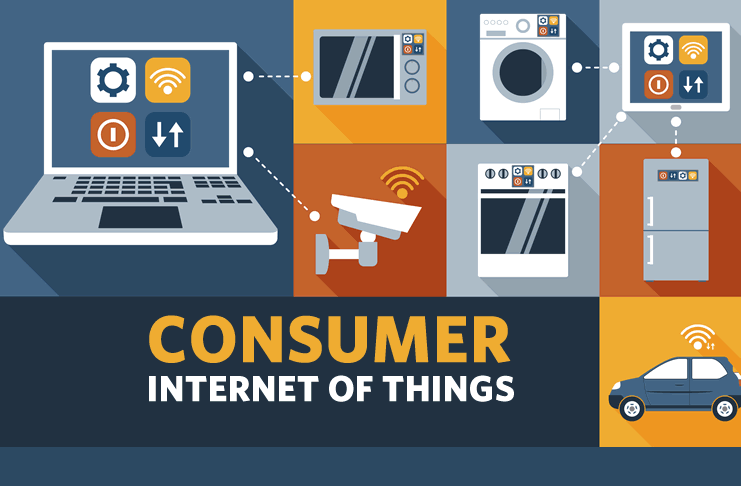
Most investments and applications in IoT are for the Industrial Internet of Things, a term for the IoT as it is used in industries such as manufacturing, logistics, healthcare, agriculture, automotive and industrial markets (where it takes center stage in an evolution and vision called Industry 4.0 or the Industrial Internet) and with some pretty different technologies and applications than you see in consumer IoT.
So, people who were more active in one or the other ‘segment’ wanted to use different terms, because of the big differences between both and because they felt that the Internet of Things or IoT was a far too broad term.
Consumer Internet of Things and IoT: different but not really
There also are/were huge differences between typical consumer devices and applications in the consumer electronics space such as smart watches or smart thermostats on one hand and industrial devices and applications such as freight monitoring in transportation, or intelligent manufacturing systems on the other.
In practice, and as tends to be the case when you segment vast and complex realities, there are also many overlapping applications as you’ll discover – and this from several perspectives.
So, the main reason why terms such as Consumer IoT and Industrial Internet of Things were and often still are used is precisely the fact that the Internet of Things is such a broad phenomenon and people wanted to try to segment.
However, de facto most people now simply speak about IoT, whether it’s industrial or consumer or anything else. As always the most popular term is the one that people use most and when people use a term a lot, often so do companies who want to sell their solutions, even if numbers (quantity) matter less than using the terms that the people you want to engage with the terms they use (quality and relevance).
Consumer IoT and industrial/business IoT: the overlaps and use case convergence
Still, all terminology aside, it does make sense to look at the differences between the main ‘types’ of IoT which are really artificial constructs, understand the evolutions in the consumer usage of the Internet of Things and look at the main applications and devices.
At least as interesting is the reality and ongoing evolution of convergence in consumer IoT and business or industrial IoT. We don’t mean the convergence of the segments as such as they are constructs but the convergence of the various cases in which consumer-oriented devices and applications are used for business goals, and vice versa.
The difference between CIoT and IIoT mainly lies in the types of devices and applications, the technologies which power them and their purpose but in the end it’s all IoT and there are as much overlaps as there are differences
Great examples of this can, for instance, be found in the usage of the Internet of Things in healthcare and in the usage of telematics in insurance. We’ll touch upon these and others later.
Consumer Internet of Things applications can range from very simple and cheap ones such as personal fitness devices to high-end smart home automation applications. So, the IoT use cases, devices and applications for consumers are very diverse as well. Moreover, as said they often overlap with those in more industrial and business-oriented situations.
Take the category of wearables or wearable devices/clothing/etc. in general: some are made for personal usage, others (which can look pretty similar) are built for professional or industrial usage as those used in factories or in mines for, among others, the safety of workers.
Consumer IoT and cross-industry IoT use cases
Before we look deeper another term you must know, which we just used: IoT use cases. These are simply the types of applications, goals and circumstances for which the Internet of Things can be used and is used.
Some of these IoT use cases exist both in industrial markets and in consumer markets. We call them cross-industry IoT use cases and there are loads of them.
Take asset tracking and the Internet of Things, for example. As a consumer you might want to do asset tracking (knowing the location) of things or even creatures (pets) which are really valuable for you. In big mining companies, factories or smart city applications, however, they like to track important assets too.
The solutions and applications are different, the use case more or less the same. What you probably won’t do as a consumer, however, is combine asset tracking with, for instance asset monitoring for maintenance purposes or combining asset tracking with the usage of sensors which, together, in real-time show levels of pollution in urban areas as you can read in this real-life air quality smart city application example.
You get the picture and there are more examples below where we look at the main consumer IoT applications and use cases, as well as some cross-industry use case where the consumer sector is included.
General Consumer IoT evolutions and popular consumer IoT devices and applications
Below you can see some of the more popular consumer IoT application and IoT consumer device categories according to research, conducted end 2016, by the IAB.
Connected IoT consumer device buying intent turned out to be highest in areas such as connected and smart TV, connected streaming devices, connected car applications, wearables (certainly with regards to health tracking as is confirmed by other sources, see below), home control devices and systems in general, voice-command systems, the mentioned IoT-enabled appliances, virtual reality (think headsets but also games of course) and all types of smart watches. Buying interest in smart glasses is still relatively small but this is becoming a big one.
In other research, IDC stated early 2017 that Consumer IoT will become the third biggest industry in terms of IoT spending globally by 2020. In Western-Europe, however it will be second.
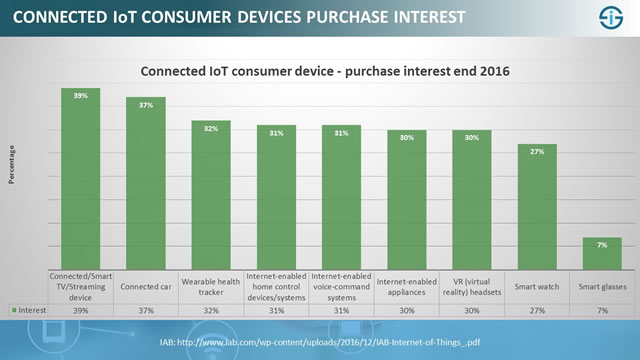
Smart home is the leading consumer IoT use case according to the research firm. Looking at consumer devices, smart eyewear (here are those smart glasses) and the next generation of smart wearables are expected to be significant growers. And of course anything related to entertainment will also be important as the IAB research equally indicates. Still, for now anything related with smart home automation is leading as analytics data from online stores, depicted below, also show.
Consumer IoT in practice: CIoT use cases
Home security and smart home
Comprehensive home security is a major area where the consumer Internet of Things is becoming more and more important.
Intrusions and unauthorized entries can now be monitored and prevented before things got out of hand. Home security is just one aspect of the smart home where we see connected devices being popular in, among others, household appliances. Other applications in smart homes include room control, entertainment systems and more. Such applications range from rather cheap and simple ones to more expensive smart home automation solutions.
Healthcare and IoT: linking personal healthcare, healthcare providers and healthcare payers
Personal healthcare is another major area where the benefits of Consumer Internet of Things are reaped extensively.
Blood pressure and heart rate bands, etc., which are powered by IoT connect us directly to the healthcare system getting timely assistance when something is not right. Monitoring of the vital signs of sportsmen during training using personal wearables helps is also becoming very common in the field of sports. Other areas of use in the healthcare industry include patients surveillance, care of the elderly and the disabled, fall detection and so on. As mentioned, there is a growing convergence between personal healthcare and the usage of IoT in healthcare, both on the healthcare provider as on the healthcare payer side.
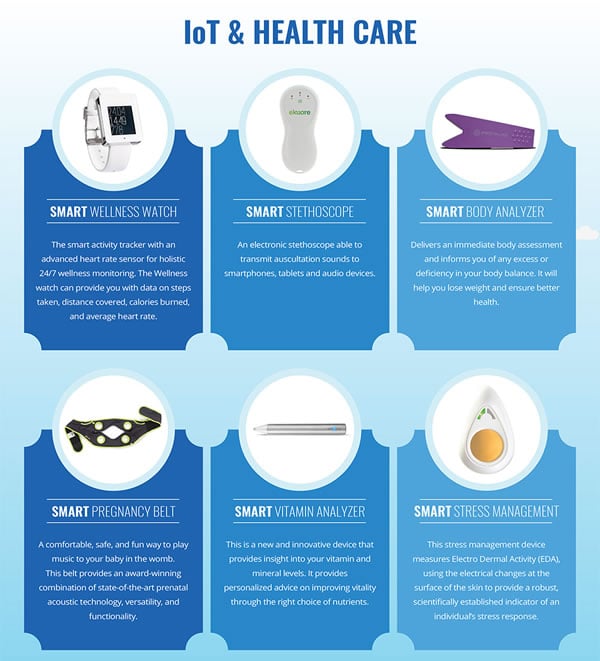
Wearable technology: not just for consumers
Wearables are sometimes used for personal healthcare but they are also becoming popular beyond just fitness trackers or smart watches as mentioned previously.
Wearables are about to change how we live but also how we work. Wearables are, for instance, being used to protect workers in factories and this means they are also used in the Industrial Internet of Things. But most wearables are consumer electronics. The market is waiting for next generation smart wearables which are less dependent from the smartphone.
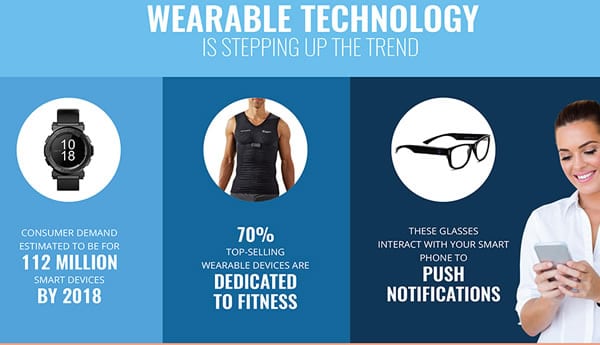
Personal asset tracking – tracking your valuable assets
From smart phone tracking to GPS pet tracking and tracking any asset you want to, is also popular in CIoT.
Pet tracking is becoming increasingly popular to give pet owners complete peace of mind. They can monitor the movement of their pets. Asset tracking solutions enable this and allow to track anything at all, also over longer distances where IoT coverage is present for low power wide area network (LPWAN) technologies such as LoRa, Sigfox, or NB-IoT.
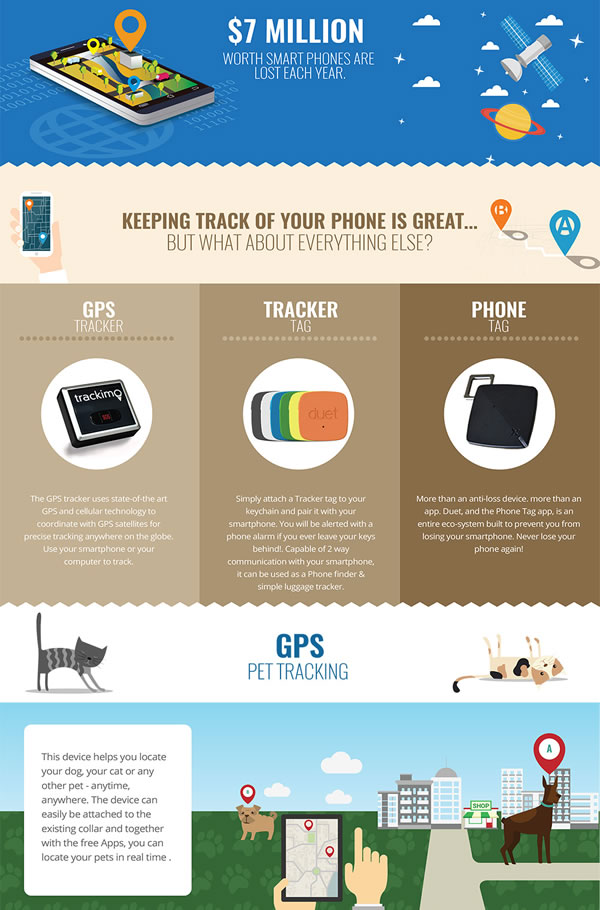
CIoT and the end of distance: remote appliances and wireless devices
All remote control appliances used to have very limited range. We had to be physically present within maximum range limits to operate the devices using the remote controls.
Today distance is not a constraint. You will be increasingly able to switch on or operate any linked device from any part of the world.
We are not talking about merely programmable timer attached gadgets but of the possibility to operate any device and application of your choice in real time as if you were physically present locally. Besides giving you complete flexibility of operation it also aids in added safety, avoiding accidents by switching off certain equipment remotely in case of accidents. It has also proven to be very useful in saving energy.
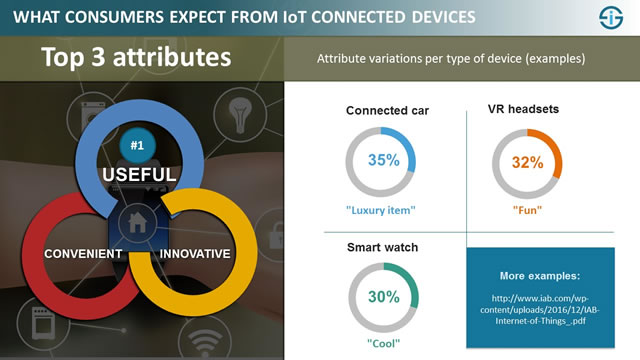
A quick word on consumer IoT security
Certainly in the consumer space, IoT security remains a big hurdle despite many industry initiatives.
So make sure you get properly informed and buy the right solutions and devices from the right manufacturers and using the right connectivity. As Intel Security’s Gary Davis rightfully stated consumers lack awareness about risks which are associated with ever more connected devices. Attacks will happen and price is just one of many aspects when you decided to buy something – inform yourself on IoT security and check that you use the devices and solutions properly.
Below is that earlier mentioned list of most popular IoT applications.
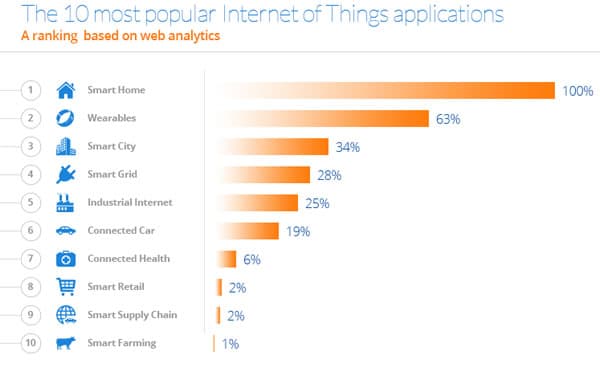
Top image: Shutterstock – Copyright: Macrovector – All other images are the property of their respective mentioned owners.

